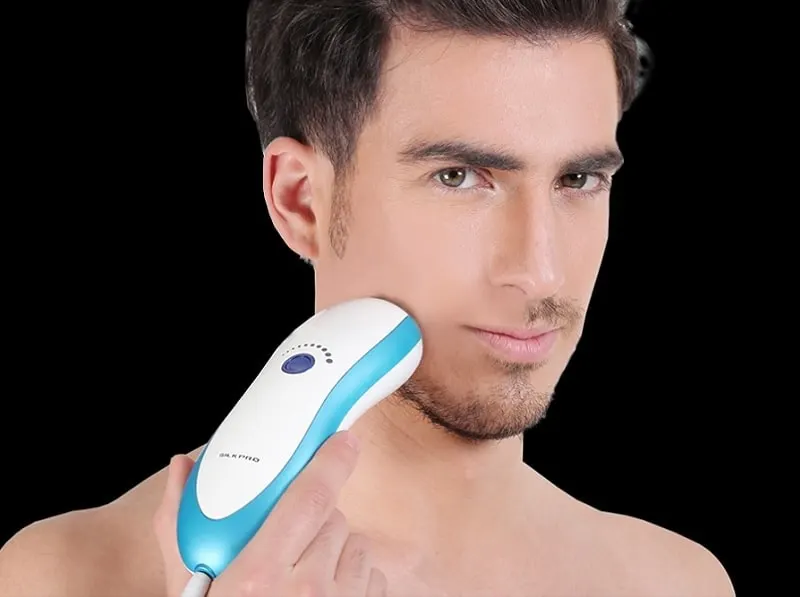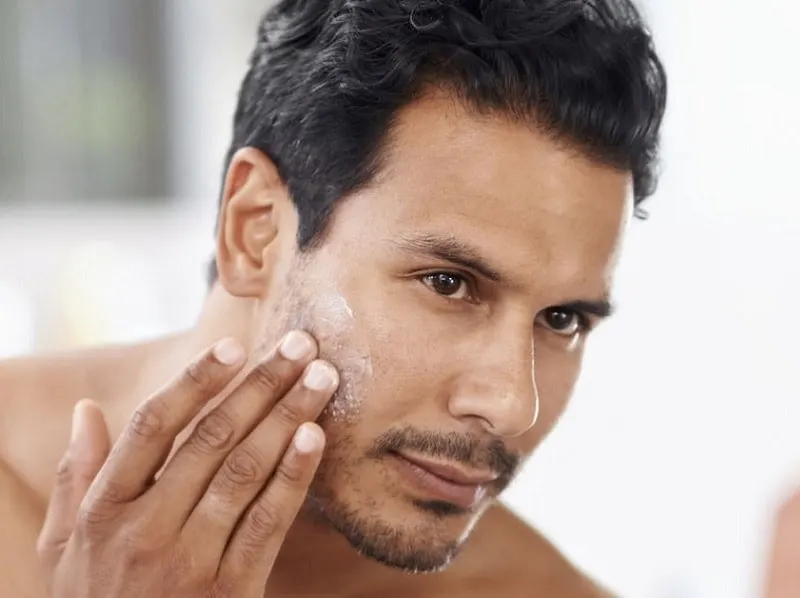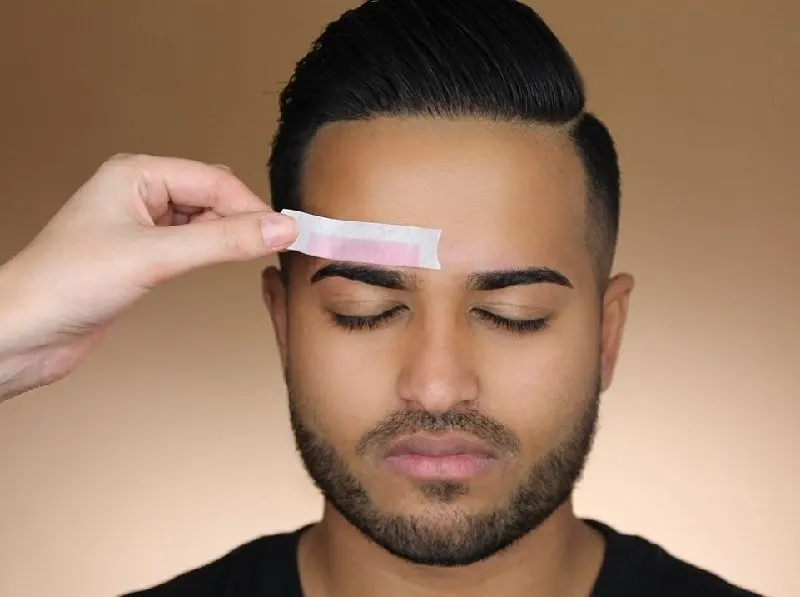How to Remove Unwanted Facial Hair Permanently
We all know how unpleasant unwanted facial hair can be. This is true for both men and women. It’s a popular belief that men like the hair on their faces. However, not all hair is wanted. If you have sparse hair that grows in different unexpected places, such as cheeks or neck, you can’t wait to get rid of it.
Daily shaving can be a real hassle for both men and women. That’s why there are several ways to get rid of unwanted facial hair permanently. Let’s take a look at some of them.
How to Remove Facial Hair Permanently Naturally Without Laser
Epilator

An epilator is an electric tool that uses multiple tweezers to quickly remove hair from the root. At first glance, an epilator may look like an electric razor but upon closer inspection, you can see that instead of blades there are short tweezers in several rows that rotate when the device is turned on.
With most epilators, you can adjust the speed that the tweezers rotate, which can reduce the pain involved. Also, certain epilators can be used on wet skin, which some people feel reduces the pain of hair removal.
Threading

A form of hair removal that has its roots in the Middle East and Asia, threading is just what its name suggests, removing hair using thread. A thread is doubled and twisted, then manipulated to remove rows of hair with precise accuracy. This method is commonly used on facial hair and is a relatively quick process. It’s considered more gentle than waxing but there is some pain involved.
Natural Hair Removal Creams

Natural hair removal creams are better than shaving because hair is dissolved just below the surface of the skin, allowing for a longer lasting smoothness. These creams can offer a hair removal solution to those not up for the pain of the other methods listed.
How to Remove Facial Hair Permanently with Honey

Honey is known for its healing and soothing properties. Anti-inflammatory and antimicrobial, honey can be combined with lemon juice to create a wax that is gentle and effective at removing facial hair.
Ingredients:
- 3 cups honey
- 2 teaspoon lemon juice
- saucepan
- candy thermometer
- cotton strips
- spatula
Instructions:
1. In a saucepan, on medium heat bring honey and lemon juice to a boil then simmer for 15 minutes.
2. Remove from heat when mixture darkens and thickens, 238 degrees using a candy thermometer.
3. Transfer to a sealable container and allow to cool.
4. Apply a layer to the area in direction of hair growth.
5. Cover with a cotton strip, pressing firmly, pull skin taut and pull the strip off in opposite direction of hair growth.
How to Remove Every Type of Facial Hair Permanently
Nose

Your nose hairs are responsible for filtering foreign particles from getting past your nasal passages. Combined with the natural mucus of your nose, nose hairs help prevent infections. It’s not advised that you remove your nose hairs as this can increase your risks of infections. However, if you absolutely have to do away with them, the best method is to simply trim them back. This way you are still receiving some of the protection of the hairs but you also get the aesthetic appeal of reducing their appearance.
If you do choose to remove your nose hairs from the root try using a gentler method such as a honey wax which will also be more hygienic due to the antimicrobial properties of honey.
Chin and Mustache

These areas are quite sensitive so any method you use outside of shaving or hair removal creams is going to be painful due to the thickness of hairs in these areas. Waxing will be quicker than epilating, laser hair removal, or any of the other hair removal methods that pull the hair out at the root.
Sideburns

All of the hair removal methods work well with sideburns as the hair tends to be not as thick as chin or mustache hair. Waxing, threading, and epilating are great options for home hair removal.
Home Remedies for Unwanted Hair Removal
There are also some home remedies that can be used to fight unwanted hair growth. They claim to remove hair but in fact, what they do is bleach it to make it almost invisible. Here is a hair mask you can try to make your facial hair less noticeable without removing it.

- Sugar, water and lemon mix. 2 tablespoons of sugar mixed with 2 teaspoons of lemon and 10 tablespoons of water. The solution should be applied to the face for 10 – 15 minutes and then washed off with lukewarm water.
Here is a natural mask that can work in the same way as waxing does:
- Egg mask. Mix together 1 teaspoon of corn flour, 1 egg and 2 teaspoons of sugar. Apply the mask to the face and leave it for 25 – 30 minutes. Peel the mask off and it should take the hair with it.
Permanent facial hair removal is possible. However, none of the methods are perfect. Each man should choose the right option for himself.
Is it possible to get rid of facial hair permanently at home in one day?
No, but you can remove it at the roots for slower regrowth. Electrolysis is the only way to permanently remove hair. Permanently removing hair requires the hair follicle to be damaged in such a way that prevents new hair from growing. All methods of hair removal outside of electrolysis are only temporary solutions but depending on how you remove the hair it can grow back finer and at a slower pace.
Is permanent facial hair removal safe?
There are risks involved anytime you’re removing hair from its root or damaging the hair follicles to stop growth. Even natural methods come with their own set of cons, so it’s important that you understand what you’re getting into before you take the leap towards permanent hair removal.
Unwanted Facial Hair Removal Using Laser
Laser Hair Removal
Laser hair removal is one of the modern ways to get rid of facial hair permanently. It has several important advantages:
- It’s mostly painless.
- There are no risks since the skin isn’t heated up or damaged.
- It’s very effective for any skin type or hair color.

Laser hair removal is effective since it destroys the hair follicle completely. The hair that was destroyed will never grow again. However, it is important to remember that some of our hair (about 10 to 20% depending on the area) is “sleeping.” There are some cells that can get activated and grow hair in the future. Laster hair removal works on the hair in its active growing phase and can’t deal with the “sleeping”: hair. That’s why just one laser session is not enough for most people.
There are no special preparations needed for laser hair removal. If you are feeling healthy then you can go through the procedure. All you have to do is make sure the length of your hair doesn’t exceed 1 -2 mm. The skin must be clean, dry and have no irritation.
Once the procedure is over, you can go on to leading a normal life. It’s not a surgery, so there is no post-op period. You can get up and go about your business.
Since you will need to come back several times to repeat the procedure, it is important to make sure you are ready for the expenses. Some men might need up to 4 laser hair removal sessions.
Laser Hair Removal Risks
The most effective method of permanent hair removal, laser hair removal uses a laser to attack hair pigment which in turn damages the hair follicle using converted heat. Because the laser attacks melanin to accomplish hair removal, those with darker skin are at greater risks of scarring and skin irritation.
Skin irritation and pigment changes are the most common side effects. Pigment changes can be light or dark and typically affect those with darker skin or those who don’t avoid sun exposure prior to their laser treatment. Other side effects include changes to the texture of the skin, excessive hair growth around the treated area, blistering, and discoloration.
Waxing

If the area where the unwanted hair grows is not too large then a good idea is to use waxing. There are several advantages to this procedure.
- If you wax regularly the hair becomes softer, thinner and eventually disappears.
- Waxing doesn’t irritate the skin and won’t cause itching and rashes.
- You can do waxing on your own at home.
- This method is not very costly.
The main disadvantage of this method is that it’s rather painful. However, the pain lasts only a second and if the area of hair growth is not too large, it is possible to endure the pain without any problems. Another disadvantage is that the hair must be grown long enough for waxing to be effective. It means you will need to go around with stubble.
Waxing is one of the most popular hair removal procedures. It allows preventing hair growth for a rather long time. After waxing, some people can forget about unwanted hair for four to six weeks. Waxing can be done for any hair type. The hot wax removes the hair together with the follicle which allows the skin to become much smoother than it does after shaving.
It’s important to remember that permanent hair removal by waxing method might take several months or even years. Shaving hair in between waxing sessions will cause it to become thick and harsh all over again. So it’s recommended not to use a razor at all and do the waxing instead.
Waxing Risks
While natural waxes tend to more gentle on skin than hard waxes, all forms of waxing will cause some degree of redness and irritation. Ripping the hair out from its follicle can expose vulnerable skin to bacteria if you’re not careful in your prepping and aftercare.
Folliculitis, an infection of the hair follicles, can occur if the area becomes exposed to bacteria or inflamed. This condition can be confused for ingrown hairs, another risk of waxing, and shouldn’t be ignored.
Another possible risk factor involved with waxing is the chance of an allergic reaction. Testing a small patch of skin prior to waxing should eliminate the chance of a greater area being affected.
Photoepilation
Photoepilation is one of the very effective hair removal methods. The procedure is done using high impulse light. This method is similar to laser hair removal. Intense pulsed light is offering less precision but more versatility than the laser because of a greater amount of light it can emit.
More often than not Photoepilation is much more effective than laser hair removal. The main advantage of this method is that it can suit absolutely any skin type and color. The main disadvantage is that it can cause some skin irritation.

Here are some other advantages of Photoepilation:
- Photoepilation can be done on any part of the body, including the face
- The effect lasts about 5 months. If the procedure is repeated on a regular basis, it leads to permanent hair removal
- The hair follicles can be removed at any depth
- The method is painless. People with sensitive skin might feel some discomfort
- Photoepilation doesn’t damage the skin. Filters prevent skin burns
- The procedure is very fast. It doesn’t take more than 20 minutes, so it can be done at any time. Even at a lunch break.
And some disadvantages:
- The effect might not be very impressive if a person has very light or graying hair (i.e. if there is not too much melanin in the hair or if it’s fully absent).
- Due to the “sleeping” hair factor, just one session might not be enough.
- Dark skinned people must be very careful when doing Photoepilation.
- There are risks of equipment malfunction which can lead to burns and skin discoloration.
- Sometimes the procedure can result in skin flaking.
Photoepilation Risks
Although better at hair removal for those with darker skin, photo-epilation carries some of the same risks as laser hair removal.
Here are some of the risks involved with this procedure:
- Irritation
- Discoloration
- Change in pigment
- Blistering
- Persistent heat sensation
Facial Hair Fun Facts
- Facial hair has higher growth chances for obese women, Mediterranean, Jewish, Eastern European or sub-continental Asian women.
- Genetics could determine if you’re more likely to develop facial hair. If you have such family history, you are more likely to get it as well.
- If you’re a woman and you have excessive unwanted hair over your body, you might be suffering from hirsutism.
- If you’re a man and you have excessive unwanted hair, your condition would be referred to as hypertrichosis.
- If you have hair excessive hair on areas where it’s less culturally acceptable or is considered unsightly, you have superfluous hair.







AM IN NIGERIA AND I DON’T KNOW ABOUT ALL THIS, BUT NEED YA HELP WHAT ABOUT SUGAR AND HONEY WILL THAT WORK BETTER? TNKS